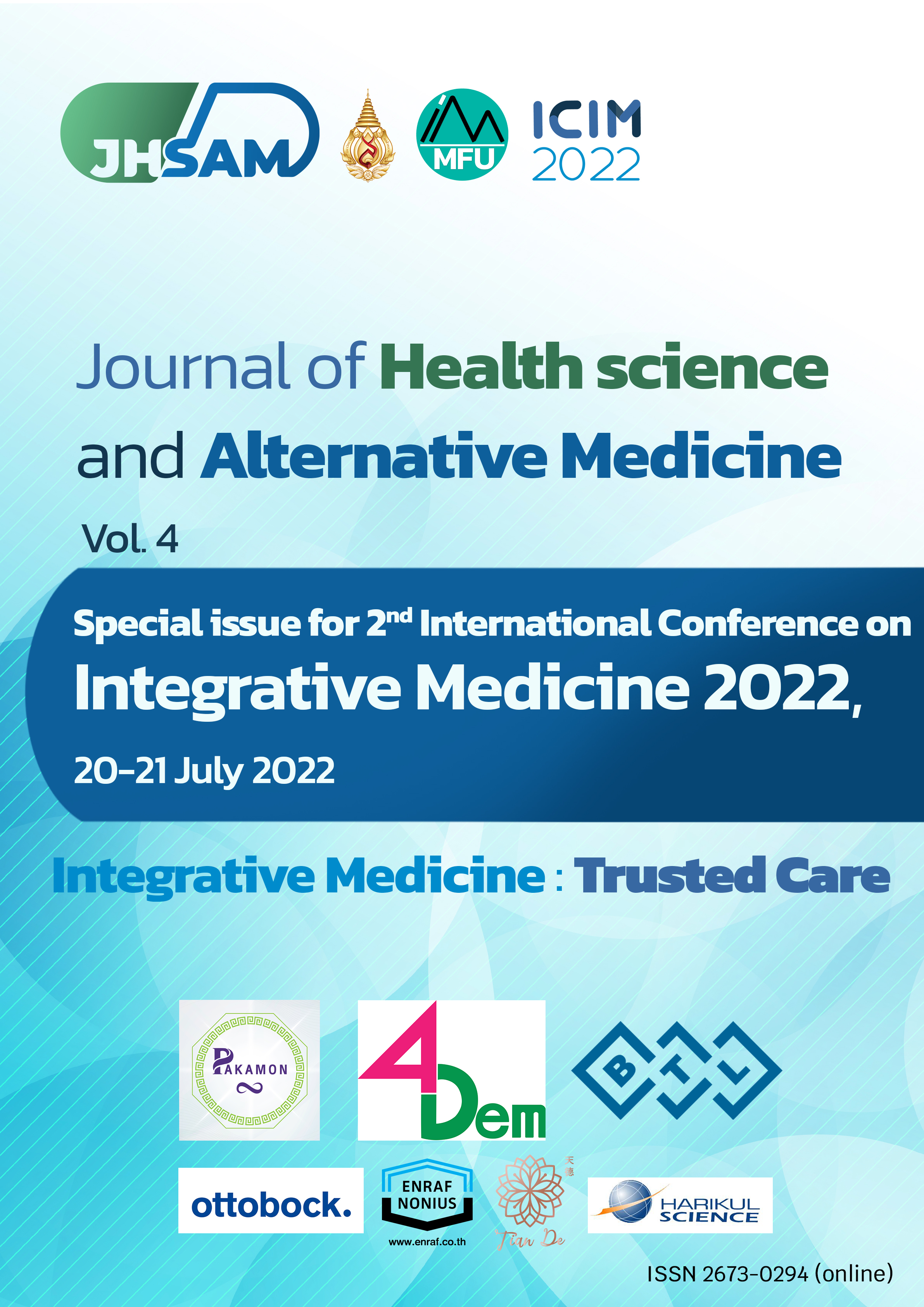A12. Effects of Modified-OTAGO on Body Composition in Older Adults during COVID-19 Outbreak: A Preliminary Study
Main Article Content
Abstract
Introduction: Aging is characterized by an unavoidable decline in body composition, including changes in muscle mass, muscle quality, and adiposity. These compartments contribute to falls, a major health issue that causes serious injuries and death. The COVID-19 outbreak causes long-term quarantine, which limits outdoor activity leading to physical inactivity. As a result, it worsens body composition declination, raising the risk of falls. The Otago Exercise Program (OEP) is widely used to prevent falls. However, it is time-consuming and requires additional walks to get better efficacy.
Objective: This study aims to investigate the effects of modified-OEP on body composition in community-dwelling older adults.
Methods: This study was a double-blinded randomized control trial. Participants aged 60-80-year-olds were randomly assigned to the modified-OEP or control group. The modified OEP group performed a 60-minute session consisting of 40-minutes OEP and 20-minutes walking, while no intervention was assigned to the control group. Body composition was assessed before and 6 weeks after intervention using Dual Energy X-ray Absorptiometry (DEXA). Repeated measures two-way ANOVA was employed for statistical analysis.
Results: After 6 weeks of interventions, the modified-OEP group had a significant decrease in leg fat mass (p = 0.0008), total fat mass (p= 0.0036), and total tissue percent fat (p = 0.0320). These observations were not observed in the control group, indicating the efficacy of the modified-OEP. In comparison between groups, the modified-OEP did not show a statistical difference from the control. However, we observed an improvement trend in lean mass and fat-free.
Conclusion: We demonstrated that the modified-OEP can significantly reduce fat in as little as six weeks. Further investigation should explore the long-term efficacy of such a program.
Article Details

This work is licensed under a Creative Commons Attribution-NonCommercial-NoDerivatives 4.0 International License.
JHSAM publishes all articles in full open access, meaning unlimited use and reuse of articles with appropriate credit to the authors.
All our articles are published under a Creative Commons "CC-BY-NC-ND 4.0". License which permits use, distribution and reproduction in any medium,
provided that the original work is properly cited and is used for noncommercial purposes.
References
-


